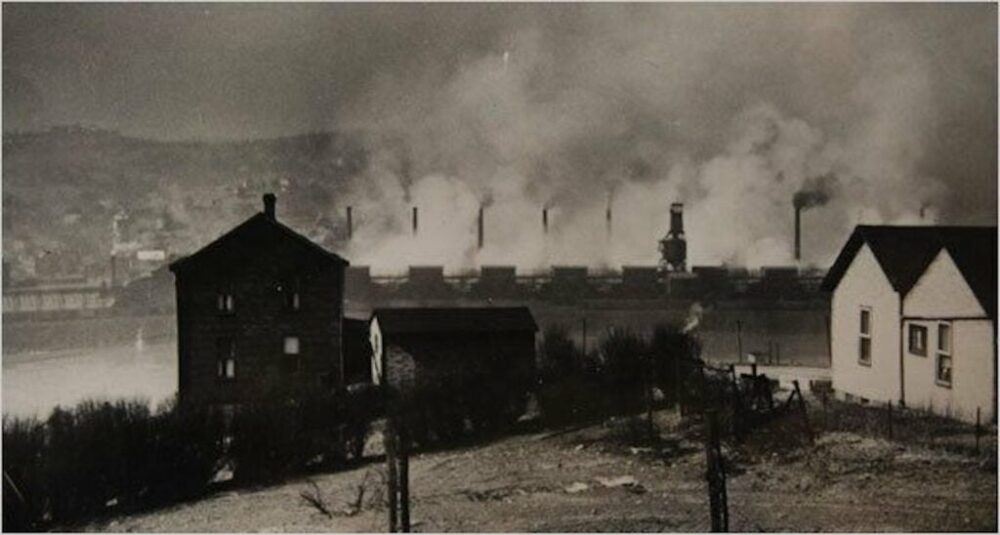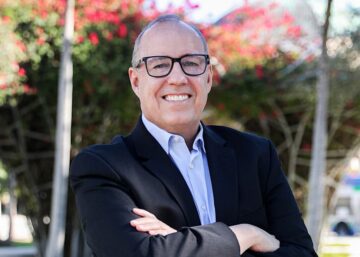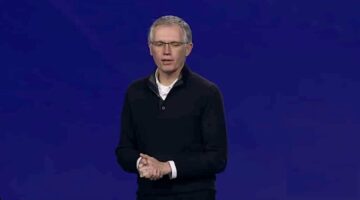The electrification of America’s automotive fleet is the latest attempt by the United States Congress to clear the air, something it has spent decades attempting. Yet this week in 1963, the 88th Congress passed The Clean Air Act of 1963, a landmark piece of legislation that would forever change the auto industry.
If the date surprises you, realize that the government was concerned about pollution far before 1970, or even 1963. In fact, the call to action would come in 1948, during the Truman administration, just after Halloween.
A Small Town’s Trials

Life had not been kind to Milton Hall, a World War I veteran living near Donora, Pennsylvania, which is a small borough approximately 20 miles south of Pittsburgh in Washington County. Hall’s wife died when his oldest child, Charles, was 10, forcing Hall to raise his five children without a mother, even as he fought constant health issues for more than a decade.
Hall started his career as a miner before becoming an employee of the Donora Zinc Works, a zinc smelting plant responsible for releasing excessive amounts of sulphuric acid, carbon monoxide and other pollutants into the air. Pollution had long been a problem in Donora, with the facility paying residents in the 1920s for air pollution caused by the plant. The zinc plant isn’t alone, as the town also is home to a Carnegie Steel plant and the American Steel and Wire Co., which has been sued twice for deaths caused by toxic fumes its plants excreted.
But just before Halloween in 1948, a heavy fog settles into the small town in the Monongahela Valley, trapping the toxic pollutants emitted by its plants. Hospitals and physicians are inundated with patients, causing the head of the local Board of Health to urge those with pre-existing conditions to leave town — easier said than done in this working-class municipality.
A warning not heeded

Instead, life goes on. The Donora Dragons run the football rather than throw it during their weekly Friday night game, as smog that thickens the air, making the ball hard to see. The annual Donora Halloween Parade is held, even if spectators have difficulty seeing those participating.
But not long after that, Milton Hill collapses in his son’s arms and dies, a victim of the worst air pollution disaster in U.S. history.
Scores of other residents report trouble breathing, but it would take three days before the Donora Zinc Works shuts down. By then, rain finally started to fall, clearing the air. But it’s too late. The fog-borne epidemic of death kills 20 residents in the region and sickens thousands.
The killer smog makes national news. And while the Public Health Service, or PHS, is concerned, the federal government has little say in controlling air pollution. Nevertheless, the federal agency sends 25 investigators to Donora to investigate. A year later, the agency releases its report, blaming an extreme meteorological air inversion that trapped the valley’s pollutants. It recommends reducing air pollution, but more strongly recommends building a weather monitoring network to predict and issue future inversions warnings.
A nation reacts
In the wake of the Donora disaster, 25 other U.S. cities request air pollution investigations from the PHS, something it’s not authorized to do by Congress, even as it was studying air quality in the Detroit/Windsor region at the request of the federally authorized International Joint Commission. About the same time, two Donora-area Democratic congressmen introduce a bill to allow the PHS to research the health hazards of air pollution. The bill never leaves committee. But the idea resurfaces in 1950 and 1951, with a bill going before Congress in 1952 to fund air pollution research. It doesn’t pass due to cost concerns.

But with the end of the Truman administration, Congress turns conservative, lessening the chances of passing any legislation like this when balancing the federal budget takes precedent over public health.
But by 1954, pro-business Republicans seek to introduce an air pollution control laws allowing industry to accelerate amortization of air pollution controls under the federal tax code. But rather than put it in a separate bill, it’s inserted as an amendment into the pending federal housing act. It never makes it into the final bill.
Yet mid-term election that same year saw Democrats regain control of both houses of Congress, convincing the Republican Eisenhower administration to convene a committee to deliberate possible federal air pollution programs.
The final report recommends state control air pollution, with a federal role limited to research supporting state objectives. The idea becomes the “Air Pollution Control Act of 1955,” authorizing PHS to back the states and manage research. While the bill establishes a new standard for federal participation, it doesn’t grant the government any enforcement authority.
A new approach
That changes when Arthur Flemming becomes President Eisenhower’s Health, Education and Welfare (HEW) secretary in 1958. Flemming supports strengthening the Air Pollution Act by giving the government more power. But Flemming’s bill dies in committee in late 1960, killed by a Sothern States Rights Democrat.

But air pollution has become an issue, albeit a minor one, for the incoming Kennedy administration. Although President Kennedy sends 27 legislative proposals to Congress from February through September 1961, little is done to tackle air pollution. Yet for the next two years, Congress wrangles over a number of new air pollution bills. None pass both houses. It would take a new round of mid-terms, with no change in party, to revive hopes of air pollution legislation. Yet the question remains the same one that vexed lawmakers since the Eisenhower days; Did the federal government have the legal authority to control air pollution?
By now, it did for water pollution, and Congressional support for strong federal enforcement authority had grown among Democrats and moderate Republicans. Finally coming to a consensus, despite the objections of manufacturers, the Clean Air Act of 1963 passes the House and then the Senate respectively.
But in the interim, President Kennedy is assassinated.
It would be President Lyndon Johnson who signs the act into law this week in 1963.
It is amended in 1965 by the Motor Vehicle Air Pollution Control Act, which authorizes the federal government to set required standards for controlling pollutants from automobiles beginning with the 1968 model year. It would be amended again in with The Air Quality Act of 1967, followed by further amendments in 1970, 1977 and 1990.
The Clean Air Act of 1963 is the sort of federal oversight that has led the automobile to become the most regulated consumer product in the world, one whose features are a result of government dictates as much as consumer desire.
And it all started in Donora in 1948.
Sources: The Pittsburgh Press, the EPA, The New York Times, and Hastings Environmental Law Journal.
- SEO Powered Content & PR Distribution. Get Amplified Today.
- Platoblockchain. Web3 Metaverse Intelligence. Knowledge Amplified. Access Here.
- Source: https://www.thedetroitbureau.com/2022/12/the-rearview-mirror-congress-clears-the-air/
- 10
- 1951
- a
- About
- accelerate
- Act
- Action
- administration
- After
- agency
- AIR
- Air pollution
- All
- Allowing
- alone
- Although
- amendments
- American
- among
- amounts
- and
- annual
- approximately
- Arthur
- attempting
- authority
- auto
- automobile
- automotive
- back
- become
- becomes
- becoming
- before
- Beginning
- Bill
- Bills
- Blaming
- board
- breathing
- budget
- Building
- call
- carbon
- Carbon monoxide
- Career
- caused
- causing
- chances
- change
- Changes
- Charles
- child
- Children
- Cities
- clear
- Clearing
- closed
- code
- come
- coming
- commission
- concerned
- Concerns
- conditions
- Congress
- Congressional
- Congressmen
- Consensus
- constant
- consumer
- control
- controlling
- controls
- Cost
- county
- Date
- Days
- Death
- deaths
- decade
- decades
- democratic
- Democrats
- Despite
- DID
- died
- Difficulty
- disaster
- Doesn’t
- down
- during
- easier
- Education
- Election
- Employee
- enforcement
- environmental
- EPA
- Epidemic
- establishes
- Even
- extreme
- Facility
- factories
- Fall
- Features
- Federal
- Federal government
- federal oversight
- federally
- final
- Finally
- First
- FLEET
- Fog
- followed
- Football
- forever
- Friday
- from
- fund
- further
- future
- game
- Giving
- Goes
- going
- Government
- grant
- grown
- Hall
- halloween
- Hard
- head
- Health
- Held
- history
- Home
- hopes
- hospitals
- House
- houses
- housing
- HTTPS
- idea
- in
- Incoming
- industry
- International
- introduce
- inversion
- investigate
- Investigations
- Investigators
- issue
- issues
- IT
- Johnson
- journal
- Kind
- landmark
- Late
- latest
- Law
- lawmakers
- Laws
- Leave
- Led
- Legal
- Legislation
- Legislative
- Life
- Limited
- little
- living
- local
- Long
- MAKES
- Making
- manage
- Manufacturers
- max-width
- miner
- minor
- mirror
- model
- monitoring
- more
- most
- mother
- Motor
- nation
- National
- Near
- network
- Nevertheless
- New
- New York
- New York Times
- news
- next
- night
- number
- objectives
- oldest
- ONE
- Other
- Oversight
- participating
- participation
- party
- passed
- passes
- Passing
- patients
- paying
- Pennsylvania
- piece
- plants
- plato
- Plato Data Intelligence
- PlatoData
- Pollution
- possible
- power
- Precedent
- predict
- president
- press
- Problem
- Product
- Programs
- Proposals
- public
- public health
- put
- quality
- question
- RAIN
- raise
- realize
- recommends
- reducing
- region
- regulated
- Releases
- remains
- report
- Republicans
- request
- required
- research
- residents
- responsible
- result
- Revive
- rights
- Role
- round
- Run
- Said
- same
- seeing
- Seek
- Senate
- September
- service
- set
- settles
- Shuts
- Signs
- since
- small
- something
- South
- spent
- standard
- standards
- started
- State
- state control
- States
- strengthening
- strong
- strongly
- Studying
- sued
- support
- Supporting
- Supports
- surprises
- Take
- takes
- tax
- The
- The New York Times
- the world
- their
- this week
- thousands
- three
- Through
- time
- times
- to
- too
- trouble
- u.s.
- under
- United
- United States
- Valley
- vehicle
- veteran
- Victim
- Wake
- war
- warning
- washington
- Water
- Weather
- week
- weekly
- Welfare
- which
- while
- WHO
- wife
- Wire
- without
- works
- world
- Worst
- would
- year
- years
- zephyrnet













